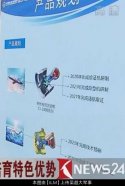Why not use the WS-20 instead? Similar thrust to cj-1000, and unified logistics with y-20?
I think it is worth clarifying what you mean here.
Do you mean a C919
for civilian markets using WS-20?
Or do you mean a militarized C919
for military purposes, using WS-20?
If you mean the former, then that is a no go, for various reasons that others have already listed.
If you mean the latter, then it is potentially more viable as a shorter term "domestic militarized" option. Such an aircraft would be powered by two WS-20s, and use domestic avionics systems/militarized as replacements for the current C919's major subsystems.
Such an aircraft could have many roles in the PLA, basically taking up the same roles that the current Y-8/9 special mission aircraft do and more:
- AEW&C
- MPA
- standoff EW/ECM
- ELINT, SIGINT
- Airborne command post
- Air to ground radar/ISR platform
... among others
BUT, a "domestic militarized" C919 might not be worth the time and money and aerospace resources of integrating WS-20 onto it, if the CJ-1000A is on the horizon.
If the CJ-1000A is on the horizon, we can bet that a domestic C919 for the civilian market would be on the horizon as well, and it would require time, money and aerospace resources to integrate CJ-1000A onto a domestic C919-civilian viable variant.
If that is the case, then pursuing a dual track "domestic C919" strategy may not be wise because you end up with two different major variants requiring their own separate logistics and suppliers for their engines and duplicating resource consumption during the engine integration for each aircraft.
A "domestic militarized" variant would be C919 with domestic subsystems and WS-20, and only be able to operate as a military airframe due to non-competitive engines for the civilian market.
A "domestic civil" variant would be C919 with domestic subsystems and CJ-1000A, and would be able to operate both as a military airframe as well as a civilian airliner for the civilian market.
Given that, I think the only reason for which a "domestic militarized" C919 variant would be deemed worthwhile, is if the CJ-1000A's maturity is very far into the future (say, well past 2030s), AND if the PLA desperately wanted a narrow body jet airliner airframe as the basis for special mission roles that I mentioned above.
But otherwise, I don't think a "domestic militarized" C919 is a good expenditure of resources, and that I think awaiting for the "domestic civil" C919 variant is better.

